An extremely rare and unique Western Tibetan fresco fragment depicting Prince Siddhartha in an archery contest, Ladakh or Mustang (Lo) Kingdom, 15th-16th century, likely to have originated from a Western Himalayan cave temple, depicting the story of a contest held between the young Prince Siddhartha and three other princes, his cousins Devadatta and Anuruddha and his then half-brother, Nanda, 48.5cm wide By the customs of the Kshatriya Sakyan clan, the young men were all competing for the hand of Princess Yasodhara by showcasing their superiority in three disciplines- swordsmanship, horsemanship and as portrayed in this scene, archery. According to this story, none of the Princes regarded Prince Siddhartha as a likely threat to them, as they had all played together in the palace as children and witnessed first hand his ostensible weaknesses in the manly arts. For example, Devadatta remembered how when out hunting his cousin Siddhartha had never killed anything. In preparation for the archery contest, huge drums with leather skins were set up at the far end of a long field. After two impressive displays and a seemingly unbeatable feat by Devadatta, the young Siddhartha lifted up a mighty bow that no one else had the strength to draw and in some cases, even lift. With ease, the prince flexed the bow and launched an arrow through each and every target on the field, utterly eclipsing the performance of all the others. In many accounts, the arrow was said to plunge into the ground and disappear after piercing the final target. The style of the painting has the lyrical, graphic form and vivid colouration of the frescoes of Guge, which developed in the Western Tibetan region as a result of a steady influx of Indian and Kashmiri artists. Devoid of any Chinese influence, theluminous colours, sensuous small-waisted figures and half-profile faces exhibit a profound joyfulness, that contrasts also with the more restricted Newari style of central Tibet. A rare and unique Western Tibetan fresco fragment depicting Prince Siddhartha atop his horse, Kanthaka, Ladakah or Mustang (Lo) Kingdom, 15th-16th century, 26cm wide, likely to have originated from a Western Himalayan cave temple, executed in the lyrical, graphic form and vivid colouration of the frescoes of Guge, which developed in the Western Tibetan region as a result of a steady influx of Indian and Kashmiri artists. Devoid of any Chinese influence, the luminous colours, sensuous small-waisted figures and half-profile faces exhibit a profound joyfulness that contrasts also with the more restricted Newari style of central Tibet. In light of the other fresco fragment that it accompanies, the scene is likely to relate to the story of the athletic contest that was held for the hand of Princess Yasodhara between the young Prince Siddhartha, his cousins Devadatta and Anuruddha and his then half-brother, Nanda. According to several accounts, on the day of the contest the four young contestants entered one at a time, each dressed in fine robes upon magnificent horses. The seventeen year old Siddhartha entered last on his faithful white horse, Kanthaka, to roars of applause from the crowd. Kanthaka is remarked upon in numerous accounts of the early life of Siddhartha, as the favourite horse and loyal servant of the prince. It was Kanthaka who, accompanied by his divine charioteer Channa, carried Siddhartha out of Kapilavastu's palace walls to a forest by the edge of the Anoma River, where he would commence his ascetic path towards Buddhahood. According to certain Buddhist texts, Kanthaka was later reborn as a brahmin and went on to attend Dharma talks by the enlightened Buddha, eventually achieving enlightenment himself Provenance: Private UK Collection. Previously acquired from the Stockton House Collection sold in a Bond street auction. 西藏 十五/十六世纪 筆關於壁画 二件 Condition report disclaimer
An extremely rare and unique Western Tibetan fresco fragment depicting Prince Siddhartha in an archery contest, Ladakh or Mustang (Lo) Kingdom, 15th-16th century, likely to have originated from a Western Himalayan cave temple, depicting the story of a contest held between the young Prince Siddhartha and three other princes, his cousins Devadatta and Anuruddha and his then half-brother, Nanda, 48.5cm wide By the customs of the Kshatriya Sakyan clan, the young men were all competing for the hand of Princess Yasodhara by showcasing their superiority in three disciplines- swordsmanship, horsemanship and as portrayed in this scene, archery. According to this story, none of the Princes regarded Prince Siddhartha as a likely threat to them, as they had all played together in the palace as children and witnessed first hand his ostensible weaknesses in the manly arts. For example, Devadatta remembered how when out hunting his cousin Siddhartha had never killed anything. In preparation for the archery contest, huge drums with leather skins were set up at the far end of a long field. After two impressive displays and a seemingly unbeatable feat by Devadatta, the young Siddhartha lifted up a mighty bow that no one else had the strength to draw and in some cases, even lift. With ease, the prince flexed the bow and launched an arrow through each and every target on the field, utterly eclipsing the performance of all the others. In many accounts, the arrow was said to plunge into the ground and disappear after piercing the final target. The style of the painting has the lyrical, graphic form and vivid colouration of the frescoes of Guge, which developed in the Western Tibetan region as a result of a steady influx of Indian and Kashmiri artists. Devoid of any Chinese influence, theluminous colours, sensuous small-waisted figures and half-profile faces exhibit a profound joyfulness, that contrasts also with the more restricted Newari style of central Tibet. A rare and unique Western Tibetan fresco fragment depicting Prince Siddhartha atop his horse, Kanthaka, Ladakah or Mustang (Lo) Kingdom, 15th-16th century, 26cm wide, likely to have originated from a Western Himalayan cave temple, executed in the lyrical, graphic form and vivid colouration of the frescoes of Guge, which developed in the Western Tibetan region as a result of a steady influx of Indian and Kashmiri artists. Devoid of any Chinese influence, the luminous colours, sensuous small-waisted figures and half-profile faces exhibit a profound joyfulness that contrasts also with the more restricted Newari style of central Tibet. In light of the other fresco fragment that it accompanies, the scene is likely to relate to the story of the athletic contest that was held for the hand of Princess Yasodhara between the young Prince Siddhartha, his cousins Devadatta and Anuruddha and his then half-brother, Nanda. According to several accounts, on the day of the contest the four young contestants entered one at a time, each dressed in fine robes upon magnificent horses. The seventeen year old Siddhartha entered last on his faithful white horse, Kanthaka, to roars of applause from the crowd. Kanthaka is remarked upon in numerous accounts of the early life of Siddhartha, as the favourite horse and loyal servant of the prince. It was Kanthaka who, accompanied by his divine charioteer Channa, carried Siddhartha out of Kapilavastu's palace walls to a forest by the edge of the Anoma River, where he would commence his ascetic path towards Buddhahood. According to certain Buddhist texts, Kanthaka was later reborn as a brahmin and went on to attend Dharma talks by the enlightened Buddha, eventually achieving enlightenment himself Provenance: Private UK Collection. Previously acquired from the Stockton House Collection sold in a Bond street auction. 西藏 十五/十六世纪 筆關於壁画 二件 Condition report disclaimer
.jpg)
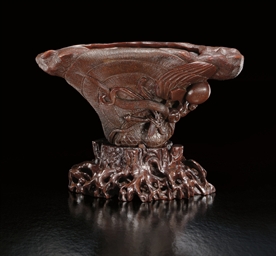


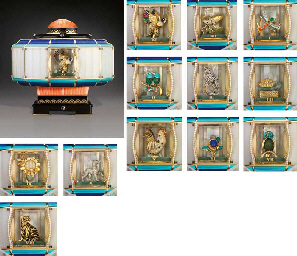
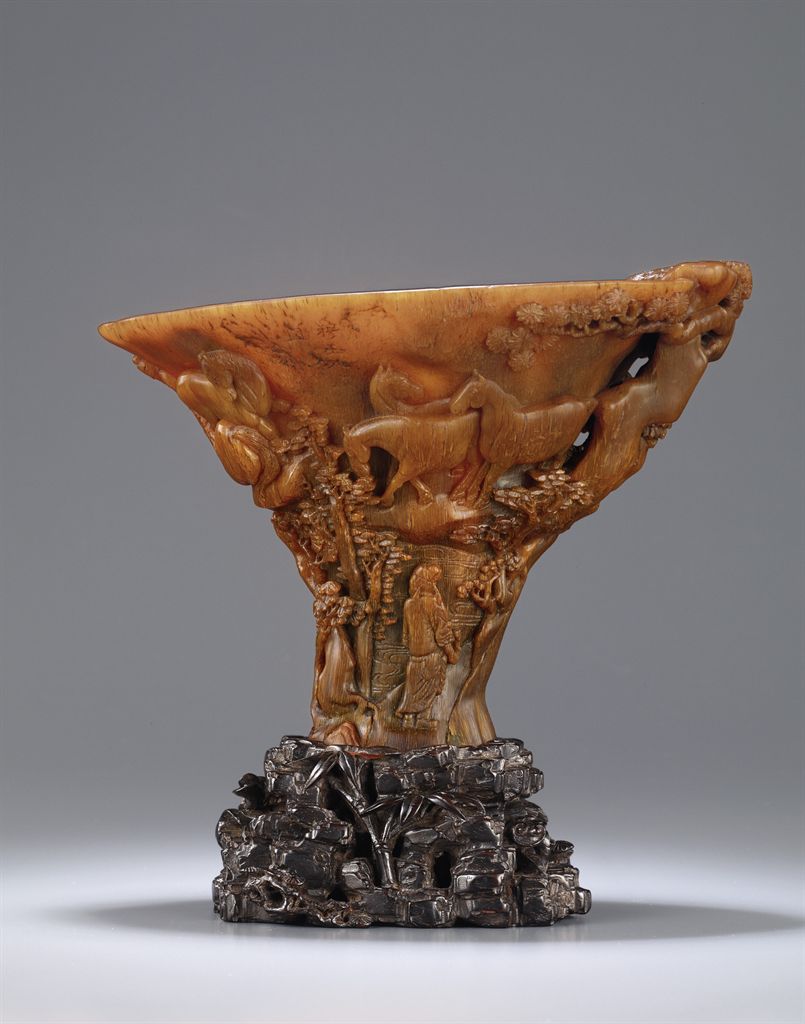

.jpg)

.jpg)
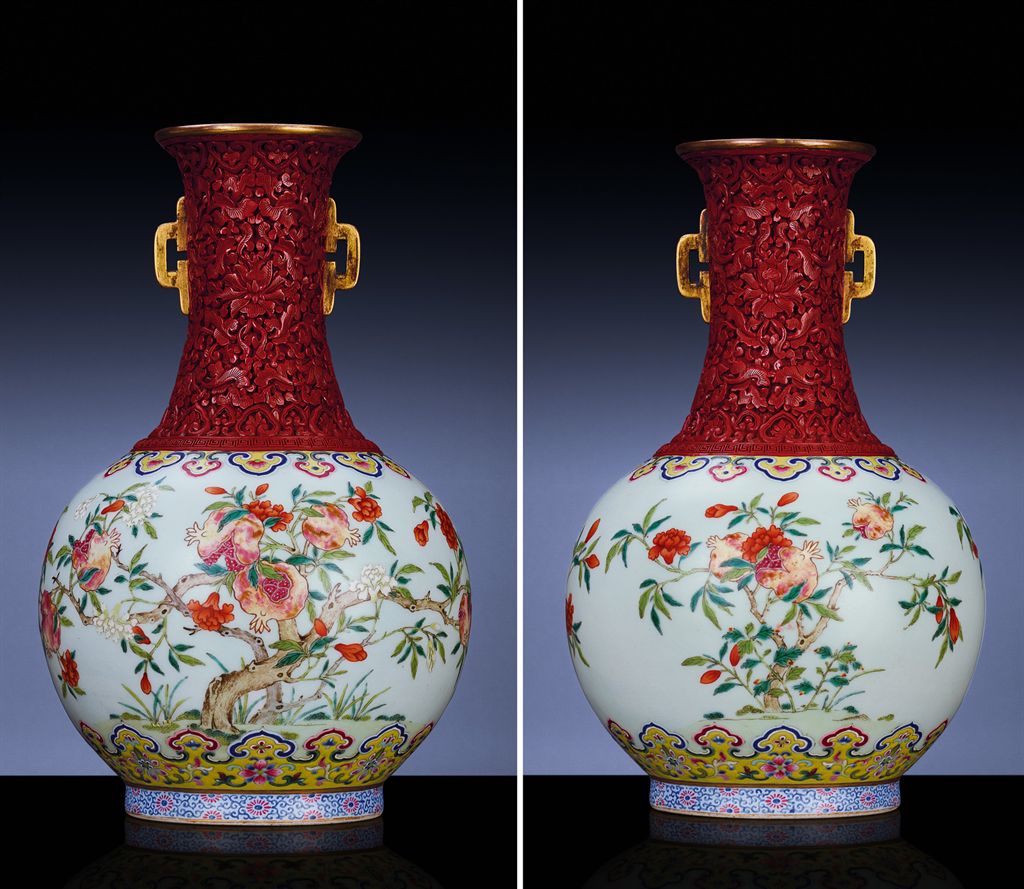


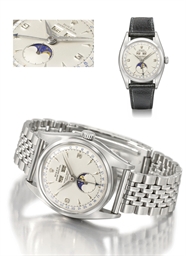
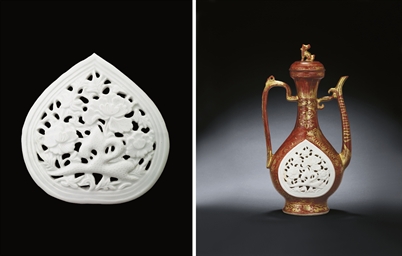
Try LotSearch and its premium features for 7 days - without any costs!
Be notified automatically about new items in upcoming auctions.
Create an alert